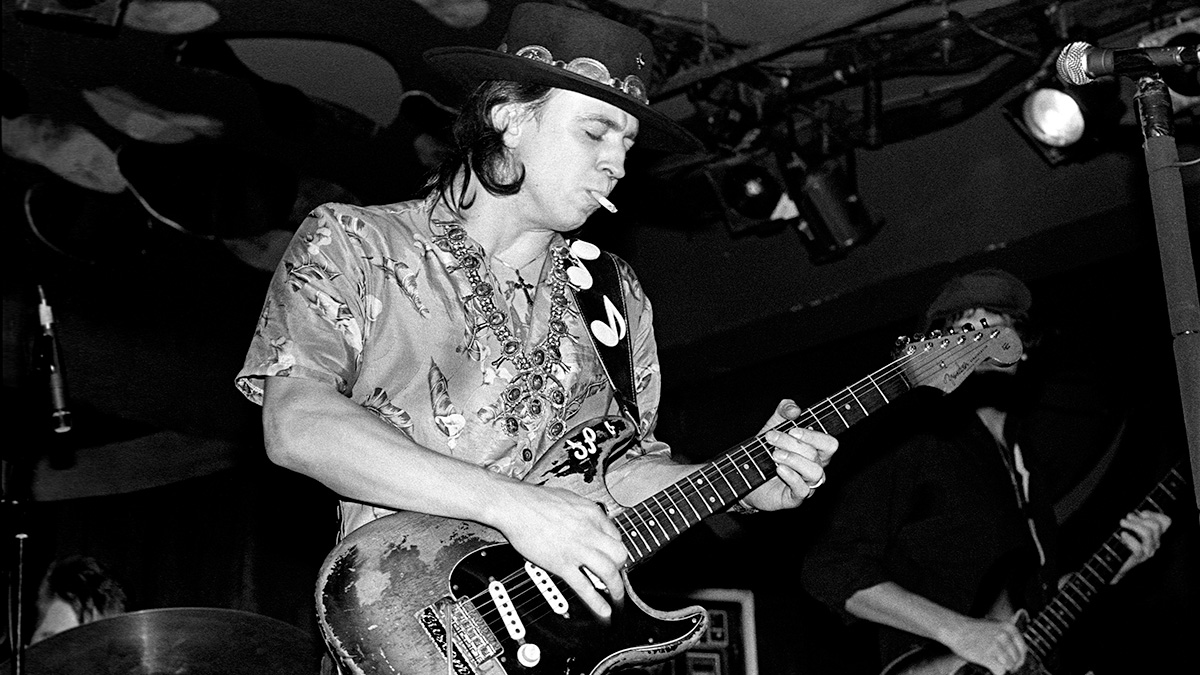
The minor pentatonic scale is without a doubt one of the most popular scales within a guitarist’s toolkit.
From the early blues and rock and roll of the ’40s and ’50s, through to the psychedelic sounds of the swinging ’60s; the classic rock of the ’70s and ’80s, to ’90s alternative rock and Britpop; continuing throughout most guitar genres of the 2000s onwards, the minor pentatonic scale has always had a place in popular music.
With its guitar-friendly formula consisting of two-notes-per-string patterns, this scale sits well under the fingers and has enough melodic and harmonic content to be used in most styles of music.
The minor pentatonic consists of five notes, which means that there are five positions of the scale that can be played across the entire fretboard. If you are unsure of how to play all of these shapes, you should look them up and commit them to memory.
This will help you break out of your tried and tested licks and enable you to navigate different octaves and areas of the neck, opening up your creativity and technique. Learning these shapes can then help you understand how to play many more scales and arpeggios, using the CAGED system.
There are a number of guitarists who are well-known for their use of the minor pentatonic, some of whom I cover in the following five examples and study piece. Stevie Ray Vaughan showed how the minor pentatonic scale could be employed to produce emotive, soulful solos along with exciting quick-fire licks. Gary Moore used the scale in a similar way, albeit with more gain for a harder and edgier sound.
Zakk Wylde has produced some frighteningly fast licks using the scale, while Guns N’ Roses just wouldn’t sound the same without Slash on lead guitar duties, showcasing his pentatonic prowess. Eric Johnson uses the minor pentatonic scale to stunning effect, showing how its notes can be used with string skipping and irregular note groupings to produce a different take on things – when Eric uses the scale it doesn’t sound bluesy, but in fact somewhat other-worldly.
This lesson’s examples and study piece feature a series of lines that cover a lot of the guitar neck using the E minor pentatonic scale. I’ve chosen to focus on speedy licks, rather than the more soulful side of the scale, to add some excitement to your playing.
As always, if some of these licks are a tad too fast, drop your metronome tempo and gradually work up to the required speed. I’d recommend trying some of these licks along to backing tracks, making sure to try various keys so that you are able to transpose your licks and improvise freely and competently.
Get the tone
Amp settings: Gain 6, Bass 4, Middle 5, Treble 6, Reverb 3
Since our featured guitarists played a whole range of different guitars, virtually anything with an action good enough to accommodate speedier licks will do. Use an overdrive pedal (or amp drive) for the medium-gain licks, and perhaps jump on a distortion pedal for the lairier ones. Some ambient reverb will complement both tones, as does some delay.
Examples: tab and audio
Example 1. Stevie Ray Vaughan
This example uses the open position of the E minor pentatonic scale in a typical SRV fashion, with a combination of slurs and alternate picking.
Example 2. Gary Moore
Gary is well-known for his use of rapid fire licks. Positions three and four of the scale are used here to produce some sextuplet licks.
Example 3. Zakk Wylde
Zakk will often move between scale shapes along a couple of strings to make his way up to the top end of the fretboard, much as Jimmy Page does, but with a good deal more aggression. Although an alternate picker, he is also known for his use of legato, as shown in this example.
Example 4. Slash
This is a classic Slash inspired example, which climbs shape one of the scale at the 12th fret before ending with some triplet-based bending licks.
Example 5. Eric Johnson
This final example illustrates how Eric Johnson uses irregular note grouping within his playing. This descending lick is phrased using groups of five, which will add a little spice to your phrasing. Notice how, although Eric plays the same notes, it sounds miles away from SRV, Gary Moore or Slash.







